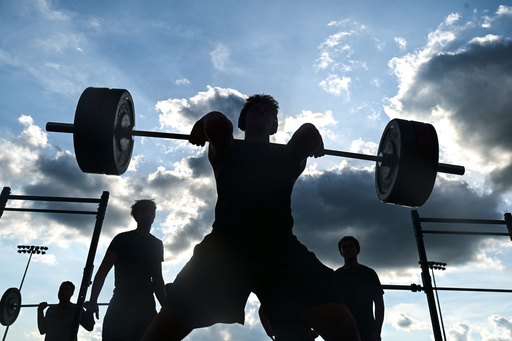
LONDON — The old saying “no pain, no gain” raises a critical question regarding the necessary level of discomfort in weight training for optimal results. According to fitness experts, the extent of discomfort required depends on an individual’s fitness objectives.
Traditionally, some trainers have emphasized the importance of pushing oneself to the point of “failure,” where one cannot perform another repetition. However, emerging studies indicate that this rigorous approach may only be advantageous for a specific group of individuals.
Michael Zourdos, who leads the exercise science and health promotion department at Florida Atlantic University, highlighted that while training to failure can effectively increase muscle size, it isn’t essential for building strength. People who engage in intense workouts without reaching complete exhaustion can still experience significant health and fitness improvements. “There is a distinction between training for health and pursuing elite performance benefits,” Zourdos noted.
For most individuals aiming to enhance their fitness, Zourdos suggests that achieving results is more manageable without the ordeal of training to complete failure. He recommends targeting workouts that leave individuals within five to ten repetitions of failure, rather than pushing them to their absolute limit. Additionally, he pointed out the potential drawbacks of “failure training,” as the fatigue and soreness could lead individuals to skip subsequent workout sessions.
In rare situations, excessive training may lead to serious health issues, including rhabdomyolysis, a dangerous condition caused by muscle breakdown that can lead to kidney damage.
James Fisher, a sports science expert and consultant based in Southampton, England, remarked that the notion of training until complete exhaustion might deter many from engaging in exercise. He emphasized that the focus should be on how hard individuals should work out rather than how long they spend at the gym.
“If your schedule is tight, increasing your workout intensity can shorten the duration of your gym time,” Fisher explained. He stressed the importance of pushing muscles to a specific threshold to improve strength. “Lifting a weight that you can easily handle for ten repetitions doesn’t provide an adequate challenge. However, increasing the weight so that the ninth and tenth repetitions are genuinely strenuous will stimulate muscle fibers effectively,” he added.
Despite the nuances of workout intensity, Fisher maintains that the most effective exercise is one that people are willing to commit to, irrespective of the intensity level. He stated that for enhancing health and overall quality of life, strength training stands out as one of the best practices for longevity.
Whatever your individual fitness aspirations may be, Fisher points out that the principles of failure training can still be integrated into your routine, with appropriate rest for the trained muscle group set at about two days. For experienced individuals, he advises reserving failure training for the latter parts of training sessions or for occasional use.
“This approach is not intended for everyone, nor is it meant to be utilized at every workout,” Fisher remarked. “It represents a challenging way to exercise.”
